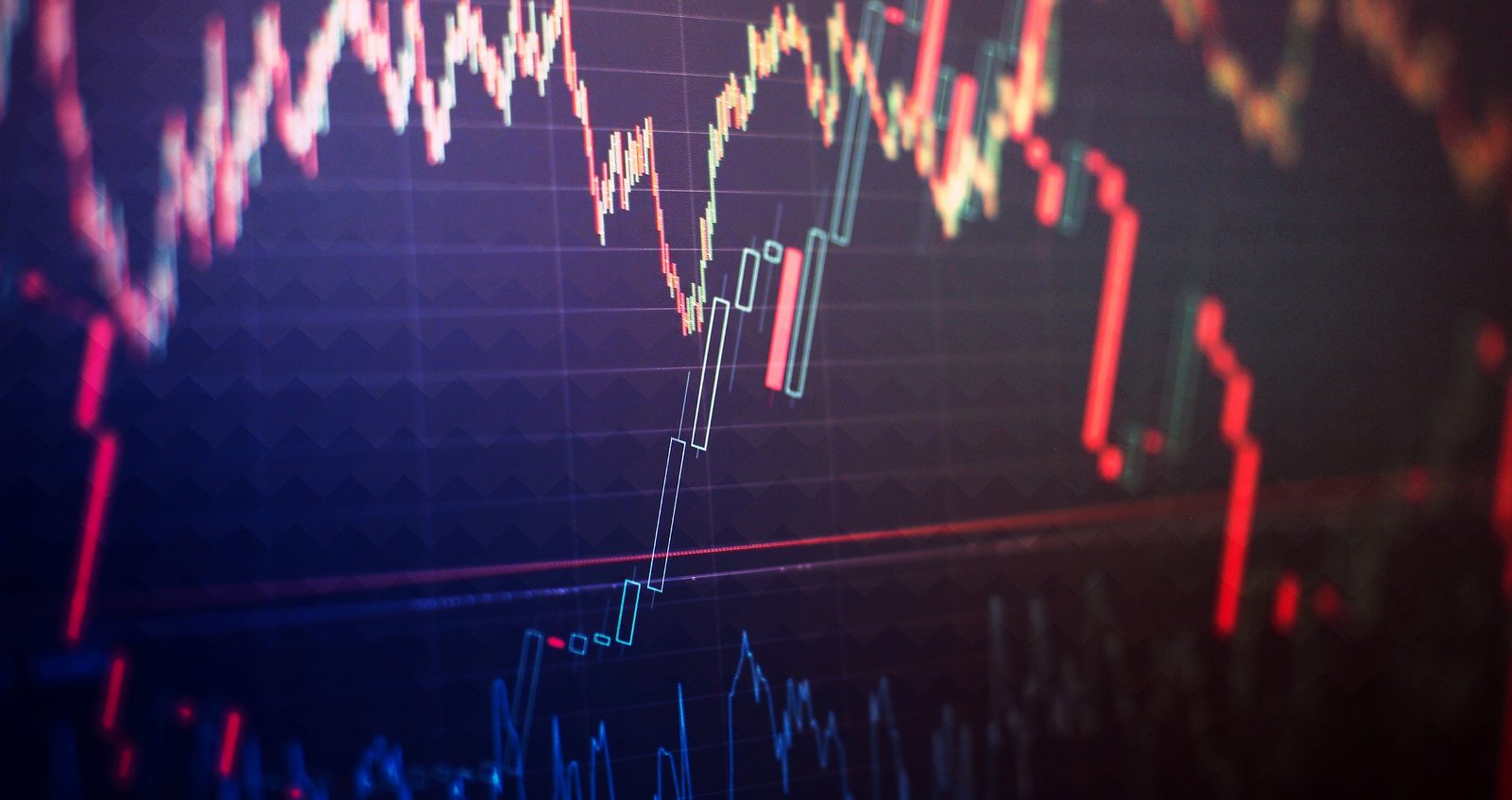Fundamental analysis is the process of analyzing the fundamental factors affecting financial markets in order to predict future prices. Forex fundamental analysis tackles the overall state of the economy and examines various fundamental factors including interest rates, employment rate, GDP, international trade, and manufacturing, to evaluate their relative impact on the value of the national currency.
Fundamental analysis in the Forex market does not focus only on comparing the current data of single economic indicators to previous data, but attempting to put all pieces of economic data in context, to see the big picture.
What is Fundamental analysis?
Fundamental analysis evaluates the price of a currency and the factors that could influence its value in the future, including external influences, financial statements, and economic trends.
Fundamental analysis is one of two major types of market analysis, along with technical analysis.
While technical analysis focuses on deriving all the information from price charts and historical movements, fundamental analysis depends on external factors that are surrounding the asset.
Understanding Fundamental Analysis in Forex
The main concept of fundamental analysis is that if a country’s current or future economic state is strong, its currency should strengthen. This is because a strong economy attracts foreign investment and businesses, which means foreigners tend to purchase this country’s currency to invest or start a business.
Essentially, it all narrows down to the supply and demand equation; a country with a strong and growing economy will enjoy stronger demand for its national currency. That leads to lower currency supply and drives up the value of the currency.
Quantitative vs qualitative fundamental analysis
Quantitative fundamentals are numerical values that reflect a company’s financials. These figures, such as revenues and liabilities, are taken from their statements and can be used to compare different securities of the same type – like stocks or commodities. Quantitative fundamental analysis is thus immensely helpful in evaluating the performance of similar investment products.
Qualitative fundamentals include any factor that is not quantifiable and cannot be represented with numbers. Issues such as a nation’s supply chain problems or consumer sentiment come to mind, for instance. While these qualities can’t be precisely measured, they may account for unanticipated changes in an asset’s cost. The qualitative fundamental evaluation may be more subjective than quantitative research, yet it becomes sharp when contrasted evenly across multiple assets.
Neither quantitative nor qualitative fundamental analysis holds a clear advantage over the other. To gain an accurate grasp of an asset’s genuine value, it is imperative to consider both types of fundamentals together.
What are the best fundamental analysis tools?
Analyzing the market can be a time-consuming and complicated task to do during trading hours and requires extensive skills. Therefore, it is important to select the best fundamental analysis tools and the most reliable resources in order to achieve higher efficiency with your market analysis and to manage your trading strategy properly. Thus, it is a time-consuming process to go through all of the economic reports such as employment rates, inflation reports, interest rates, and other data, The fundamental analysts need to rely on effective tools in order to determine trading opportunities.
Economic Calendar
What is the Economic Calendar? It is a list of pre-scheduled financial events, which affect the financial markets. The economic calendar includes the top economic reports and news releases such as monthly unemployment reports, central banks meetings, the International Monetary Fund (IMF), and more. The economic calendar has a set of important economic indicators, including (GDP, CPI, PMI, and Trade Balance).
Therefore, it is considered the main tool for forex traders and is commonly used to get an overview view of financial events which will affect currency prices. Eventually, all forex traders use the economic calendar in their daily routine and there are several useful online resources with an extensive economic calendar, such as MQL5 and investing.com.

Economic Reports
Globally, each country regularly releases economic news with data about inflation rates, retail sales, the gross domestic product (GDP), unemployment rates, and Nonfarm Payrolls (NFP). Reviewing the economic reports allows forex traders to identify the price movements and predict the changes in the currency pairs. The economic reports are typically provided in the form of time series, which covers more different periods or in the format of cross-sectional data.
The reports can be always found on official websites for the public to review. However, the traders usually tend to review the news websites and read the analysis of experts instead of checking the reports by themselves since the impact of the report on the market is more important for forex traders. There are a wide variety of news resources that can be found online, however, it is important to select a reliable market news source for daily updates and weekly outlooks.
Analysis tools & solutions
There are several financial analyses platform which offer advanced technology for scoring or rating the impact of news releases on each currency pair or gold. Usually, these solutions would range from free tools to paid tools and mobile apps. The most popular tools are provided by major companies and portals such as investing.com, Bloomberg, Trading Central, and more. In the past few years, technology has advanced and there are many tools that rely on AI and ML to provide more accurate sentiment rates.
Thus, traders should always learn forex analysis and how to use the main tools such as Economic Calendar, Economic reports, and reliable news sources. In addition, it is crucial to set up the right trading strategy with the right indicators and the proper trading plan.
ECONOMIC INDICATORS
Economic indicators are numerical measures of a country’s economic performance, such as gross domestic product (GDP), inflation rates, employment, and interest rates. These indicators can have both positive and negative effects on exchange rate values depending on the underlying economic conditions. When trading forex, it is important to be aware of the potential impact that changes in economic indicators can have on exchange rates.
For example, a country experiencing rapid GDP growth and low unemployment is likely to see an appreciation in the value of its currency. Oppositely, a country experiencing rising inflation or high-interest rates may experience depreciation as investors and traders seek higher returns elsewhere. As such, it is important for traders to carefully monitor changes in economic indicators to gain a better understanding of the underlying conditions driving changes in currency values.
Regardless of your trading style, it is essential to have a solid understanding of economic indicators and how they can affect exchange rate fluctuations. By monitoring these indicators closely, you can gain valuable insight into the underlying economic conditions that may drive short-term or long-term currency movements.
What are the major Economic Indicators used in Fundamental Analysis?
Interest rates, inflation, and GDP are the three main economic indicators used in Forex’s fundamental analysis. Of course, there are various other indicators to consider including trade balance, retail sales, and employment data. Not to mention monetary decisions, fiscal policy changes, and political stability. It’s important for you to take time to look at the numbers and understand what they mean and how they can influence a nation’s economy.
1. Interest Rates
Interest rates are essential when it comes to fundamental Forex analysis. Manipulating interest rates, as a part of the national monetary or fiscal policy, is one of the primary functions of central banks. This is because interest rates are a great factor in the economy, and are stronger than any other factor in influencing currency value as well as inflation, investments, trade activity, production rate, and unemployment.
How to use interest rate data in the fundamental analysis? By monitoring changes in interest rates closely, investors and traders can gain valuable insight into the current state of a country’s economy and its potential impact on exchange rates. For example, if interest rates are rising at a faster rate than expected, this may indicate that the central bank is likely to tighten monetary policy in response. As such, changes in interest rates should be carefully monitored by investors and traders to help predict future price movements in the currency markets.
2. Inflation Data
Inflation rates refer to changes in the prices of goods and services over time, typically as measured by a country’s consumer price index (CPI). Note that every economy has a level of what it considers as healthy inflation, usually around 2% in many countries.
As the economy grows, the amount of money in circulation grows which is the definition of inflation. Here the governments and central banks interfere to balance inflation around the target level. High inflation affects the balance of supply and demand in favor of supply, so the currency depreciates as the supply surpasses demand. There is an opposite term for inflation which is deflation. During deflation, the value of money increases, so goods and services become cheaper.
How to use inflation data in fundamental analysis? By monitoring inflation rates, investors and traders can gain valuable insight into the current state of a country’s economy and its potential impact on exchange rates. For example, if inflation levels are rising faster than expected, this may indicate that the central bank is likely to tighten monetary policy and raise interest rates in response. As such, changes in inflation rates should be carefully monitored by investors and traders to help predict future price movements in the currency markets.
3. Gross Domestic Product (GDP) Numbers
The Gross Domestic Product is the total goods and services produced by an economy within a given period. It is considered to be the best indicator of the overall health of an economy. The change rate in GDP over a period of time can tell you a lot about the health of the economy, whether it is growing or shrinking. Consequently, it is used as an indication of the strength of a country’s currency. Any increase in GDP is likely to have a positive effect on the value of the currency, opposite to when GDP shrinks.
4. Retail Sales
The Retail Sales report is another important indicator in fundamental analysis which allows to the measurement of the total sales of all retail sectors in the country. These figures are highly effective in indicating consumer spending patterns in correlation with seasonal variables. This indicator is usually used to assess the current direction of an economy.
5. Producer Price Index (PPI)
The producer price index (PPI) is a measure of the average changes in prices that producers receive for goods and services sold in the U.S. The PPI measures changes in prices at various stages of production, which include raw materials, intermediate goods, and finished goods.
How to use PPI in analysis? By monitoring changes in the PPI, investors can gain valuable insight into the current state of a country’s economy and its potential impact on exchange rates. For example, if producer prices are rising at a faster rate than consumer prices, this may indicate that inflation pressures are building up in the economy. As such, changes in the PPI should be carefully monitored by investors and traders to help predict future price movements in the currency markets.
Examples of Fundamental Analysis
There are many tools and techniques that can be used for fundamental analysis, but they can be shortlisted into two types;
- top-down analysis
- bottom-up analysis
The top-down analysis takes a broader view of the economy, starting with the entire market before narrowing it down into a specific sector, industry, or company. It uses comprehensive factors as a basis for decision-making. The top-down approach seeks to identify the big picture and all of its components that are usually the driving force for the main goal.
On the other hand, bottom-up analysis takes a completely different approach. It starts with a specific stock and widens out to consider all the factors that impact its price. Generally, the bottom-up approach focuses its analysis on specific characteristics of an individual asset and its valuations in comparison to the market.
The tools that traders might choose for their fundamental analysis vary depending on the asset that is being evaluated for trading. For example, stock traders may choose to look at the figures in a company’s earnings report, focusing on profit margins, projected growth rate, earnings per share (EPS), and revenue. While forex traders choose to assess the official figures that allow insight into the state of a country’s economy. Economic indicators are reports released by the government or a private organization that show a country’s economic performance. It is an official method by which economic health is measured, but remember that many factors and policies affect a country’s economic performance as well.

Approaches to Fundamental Analysis
Let’s review in-depth how to conduct the different types of fundamental analysis with the steps on each level and what indicators you need.
Top-Down Analysis Steps
To begin, we assess the large-scale macroeconomic elements and data aggregates before gradually focusing our research to recognize only those currency pairs offering a potential financial gain. This is how we proceed:
- Identify the current overall economic situation of a country by checking the relevant data of its gross domestic product (GDP), business activity, employment rate, and consumer spending figures. This helps us to understand if the nation’s economy is growing or contracting and if it has ample momentum to support a currency exchange rate.
- Then we evaluate if the reigning political regime promotes policies that may have a positive or negative effect on its economy in the medium to long term. This means we check the mutual compatibility between the nation’s authorities and their respective opposition parties and third-party groups, as well as other important factors – such as a country’s stance towards EU membership, for example.
- After having determined the strengths and weaknesses of an economy, we require further data to determine if it is a viable candidate to trade with in terms of its currency exchange rate. For this purpose, we look at the current account balance (CA), as well as export-import information, which gives us insight into how competitive a country’s exports are and if it has a deficit or a surplus in its balance of trade (BOT).
These characteristics can often assist us in gauging whether a currency may become overvalued, undervalued, or even reach parity.
Down to the Micro-Level Steps
Once we have completed our top-down analysis, we begin to drill down into the microeconomic fundamentals of a currency pair in order to gain further insight. For example, if we are analyzing a potential trade opportunity for the USD/JPY currency pair, we may check the following factors:
- Interest rates – Higher interest rates can lead to an increase in demand for a currency, which results in the currency appreciating and vice versa
- Inflation rates – Low inflation can be beneficial for exporters as it may lead to more favorable foreign exchange rates
- Unemployment rates – A low unemployment rate could reflect robust economic growth that may support the value of its currency
- Balance of trade – A trade deficit can have a negative effect on the currency, while a surplus can have a positive impact.
Ultimately, fundamental analysis allows us to identify potential trading opportunities that may not be immediately apparent based solely on price movements and technical indicators. By combining these two different approaches to market analysis, investors can gain an edge in identifying potentially lucrative positions and effectively manage their risk exposure.
As you can see, fundamental analysis is a powerful tool that can help traders navigate the Forex and CFD markets more confidently. With its ability to evaluate economic conditions on both a macro- and microeconomic level, it is an essential part of any trader’s trading strategy. Whether you are looking for long-term growth or short-term profits, fundamental analysis can help you make better trading decisions that lead to more successful trades.
Bottom-up Analysis Steps
In contrast, this analysis begins by evaluating the currency pair followed by an aggregate of macroeconomic information. The following factors are commonly considered when undertaking bottom-up analysis:
- Interest rates – Higher interest rates can support the value of a currency, as investors and traders prefer to hold assets in currencies that provide higher returns. Conversely, lower interest rates may lead to the depreciation of the currency due to reduced demand from investors or traders.
- Inflation rates – Low inflation is often viewed favorably by markets as it can lead to an increase in purchasing power, which in turn increases the of a currency.
- Trade balance – A trade deficit may cause depreciation in the exchange rate of a currency as more goods are being imported than exported from that country. Conversely, a trade surplus could support its value due to increased exports relative to imports.
As you can see, the bottom-up analysis provides investors with a more focused and granular understanding of the economic factors that may drive changes in currency values. By evaluating these macroeconomic indicators at the level of individual currencies and pairs, traders have a better sense of how price movements may be shaped in the short term and long term.
Which fundamental analysis approach is right for you?
While fundamental analysis is a powerful tool for investors, it is important to understand that different markets require different approaches. Fundamentally, the decision of whether to use top-down or bottom-up analysis will depend on your own trading style and investment objectives.
For example, if you are a short-term trader focused on capturing quick gains from intraday price fluctuations, the bottom-up analysis may be more suitable as it can help you identify trading opportunities based on individual currency pairs.
On the other hand, if you are a long-term investor looking for sustainable growth over the course of several months or years, the top-down analysis could provide greater insight into the underlying economic trends that may drive exchange rate fluctuations in the long run.
Ultimately, the best approach depends on your own personal trading style and risk tolerance. By understanding both top-down and bottom-up analysis techniques, you can choose the one that is most appropriate for your investment needs and create a successful trading strategy.
What are the Top Challenges with Forex Market Analysis?
Forex analysis in general is not for everyone, and it is not a straightforward formula with easy-to-figure tricks. Even the most experienced forex traders would invest a lot of time and effort analyzing the currency pair charts and studying the numerous economic reports, and even exploring different views of the market conducted by professionals.
Therefore, fundamental or technical analysis is not based on quick tips or ready-to-use forex signals. The process of market analysis is a journey of learning forex and financial markets which leads to extensive understanding and more profitable decision-making.
The common challenges of fundamental analysis for traders:
- The sheer volume and complexity of economic data and news releases can be overwhelming, making it difficult to identify trends and make accurate predictions.
- Currency moves may be driven by more than just fundamental factors, such as technical indicators or market sentiment, creating additional challenges in predicting future price movements.
- Forex analysis involves extensive research, requiring time and effort to gather and analyze data, which can be difficult for many traders to allocate.
- Traders must also master their emotions and manage their risk exposure in order to make effective trading decisions.
Despite these challenges, fundamental analysis is a valuable tool that forex traders can use to gain deeper insight into the market and increase their profitability. By learning to navigate these complexities, traders can improve their market analysis skills and gain an edge in the forex market.






